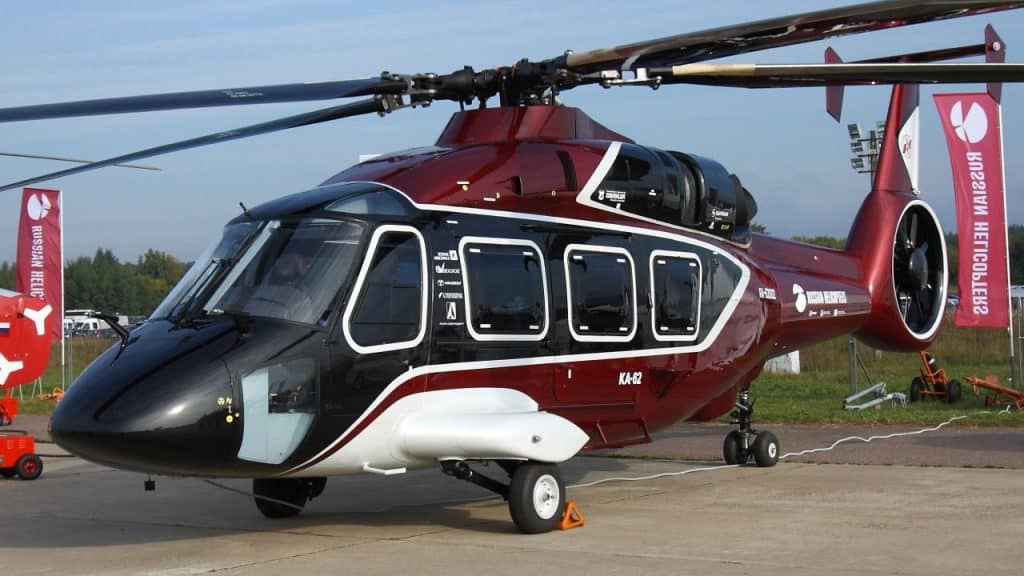Aleksandr Nieradko, head of Rosaviacya, the Russian Federal Air Transport Agency, admitted that work on the extended certification of the Ka-62 multi-role helicopter has been suspended. Reason? Of course, sanctions imposed on Russia because of the bandit attack on Ukraine. The Ka-62 uses many components of Western origin, to which the manufacturer has now lost access.
– Ka-62, of course, received a limited type certificate last year – said Nieradko during the 13th Helicopter Forum in Moscow. – Currently, work on the project is continued. They are currently suspended due to known factors, but we hope to resume them in the near future.
According to the Russian Vedomosti, the machine, which is Russia’s hope for rebuilding its position on the global helicopter market, is largely based on Western components. In total, about 60% of the components are imported. The Russians imported Turbomeca Ardiden 3G engines, rotor blades, a large part of the avionics and many other components from the West.
The cut off from supplies makes further certification of the Ka-62 in its current form pointless. The Russians must try to replace the Western components with native ones, and if they succeed, it will be possible to start from scratch the certification of a completely new version of the rotorcraft.
The Ka-62 is a civilian version of the Ka-60 Kasatka (Orka) military multi-role helicopter. It is a helicopter with a metal-composite construction in a configuration unusual for Kamov helicopters: single-rotor with a control propeller (or more precisely: with a fenestron). This system is not quite correctly called the Sikorski system – in fact it is the Yuriev system – or the conventional system. The Ka-60 made its first flight on December 24, 1998, more than ten years from the start of design work.
Ka-60 presented at MAKS 2009.
(Alan Lebeda, GNU Free Documentation License, Version 1.2)
Ka-62 is designed to transport people (up to fifteen passengers) and cargo, as well as a wide range of tasks performed by uniformed services, including search and rescue. The maximum take-off weight is 6,500 kilograms. This version was first presented in 2012, and flight tests began only in 2017. By November last year, three prototypes made 434 flights, on the basis of which Rosawiacyjnya awarded the helicopter a type certificate.
In May this year, the Russian Ministry of Industry announced that by the end of the 2020s it intended to sign contracts covering the sale of 365 (sic!) helicopters of this type. This year it was planned to produce six serial copies, and in 2023 – eight. It seems that half a year ago the Russians still hoped that the turmoil they had unleashed would subside quickly and it would be possible to return to business as usual. And such a figure…
Nevertheless, in the spring it was already clear that if the sanctions regime was not lifted, it would force the introduction of deep modifications to the helicopter design. Therefore, the pace of work on the WK-1600W engines, which are to replace the Ardiden engines currently used in the Ka-62, was increased, and tests of the propulsion unit demonstrator began in May. Certification of the engine itself is planned for 2024, and recertification of the helicopter – for 2025.
Finally, let us mention that according to the original assumptions, the Ka-60 (and Ka-62) were to be powered by native Saturn RD-600 engines, but these first flight tests painfully proved that they would not meet the design assumptions in any way. This forced the Russians to seek support abroad. Auxiliary power units were purchased from the Ukrainian Motor Sich.
Besides, the helicopter did not arouse much interest on the market anyway. The only potential customer was the Brazilian company Atlas Taxi Aereo, which in 2012 signed a letter of intent to purchase seven copies with an option for another seven. Deliveries were supposed to start in 2015, but as you can easily guess, nothing came of it. In addition, in the same weight category (maximum take-off weight 6-7 thousand kilograms) there are already several structures on the market with an established position (AW139, H175), the H160 has recently appeared, and soon the Turkish T625 Gökbey will also enter the scene.
In 2012, there was still room on the market for civilian Kasatka, a niche that could be filled at least in countries that are traditional users of Russian equipment. Now it seems that there is no such place anymore. The situation is what it is, and the project will most likely die a natural death, even if by some miracle it is possible to replace all Western components with Russian ones.
See also: Australia will pay Naval Group $830 million in damages
Doomych, public domain

